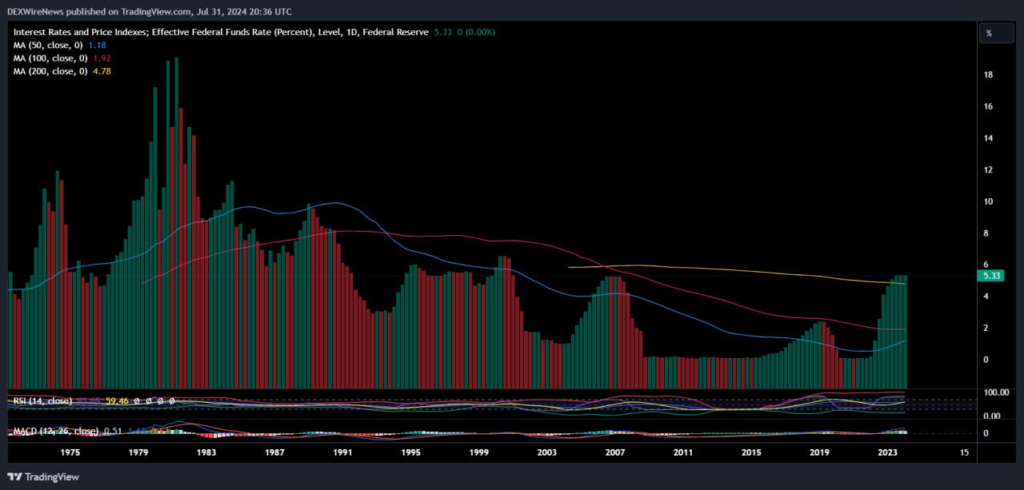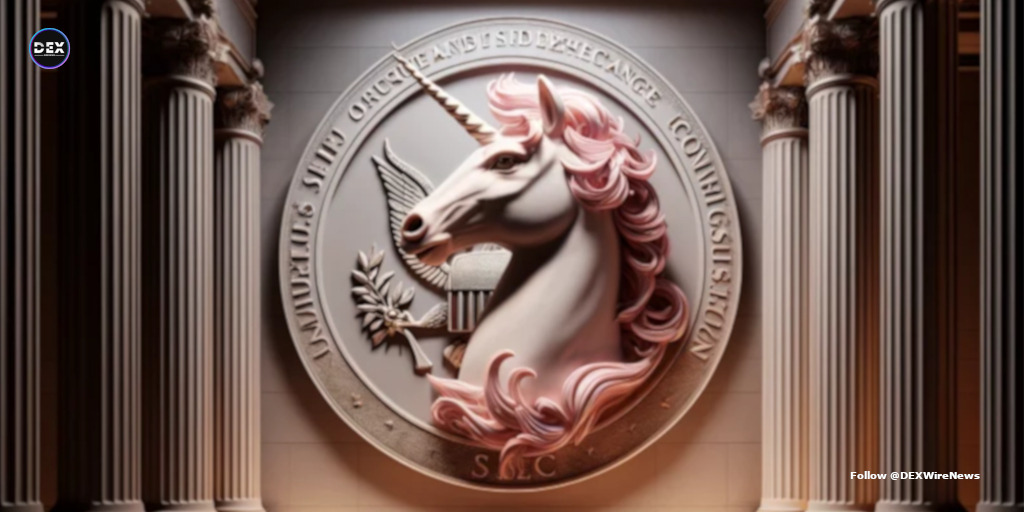The Federal Reserve announced on Wednesday, July 31, that it would leave rates unchanged. However, it signaled rate cuts could be coming soon.
In the announcement, the Federal Open Market Committee (FOMC) said it would maintain its interest rate at 5.25% to 5.5%. It noted that some progress had been made toward its goal of 2% inflation.
How The Fed Rate Impacts The Market
The current Fed rate of 5.25% to 5.5% is the highest since 2001. It is also from the 2020 to March 2022 level of 0% to 0.25%. Each decision taken by the Fed has a ripple effect on consumers.
For instance, elevated Fed rates mean that the cost of borrowing remains high. That means mortgages, auto loans, saving yields, and credit cards are all at historic highs.
The current high interest rate can be traced back to 2021. At the time, prices shot up, with the Fed keeping interest rates at record lows. It believed that the price burst was temporary and aimed to use the low interest rates to give the economy time to heal.
However, when prices failed to come down, the Fed cranked up interest rates by 5.25% in just one and a half years. Thus far, it appears to be working with inflation now at 2.5%, just shy of the Fed’s target of 2%, down from the peak of 7.1% in 2022. Despite this, unemployment continues to rise, reaching 4.1% for the first time since November 2021.

Possible Rate Cuts
During the announcement, Fed Chair Jerome Powell said that some officials considered cutting rates. However, a strong majority preferred to maintain the rates. He added the decision to retain rates was unanimous.
Powell added that possible rates would be considered at the next meeting in September. According to Powell, officials were getting to a point where it would be “appropriate to reduce our policy rate.”
How To Invest Amid Looming Rate Cuts
Here are some of the options to consider amidst possible rate cuts.
CDs And Long-Term Bonds
Market analysts point out that your portfolio should have both short-term and long-term investments. Ahead of rate cuts, they propose repositioning some of your funds into high-yield savings accounts using certificates of deposit (CDs).
You can also lock in part of your investment portfolio in long-term bonds to lock in the current high returns. These long-term bonds could appreciate as rates fall. These bonds often appreciate increased investor interest, which pushes up the price.
CDs of varying maturity are one possible route, helping you lock in the current high rates. By staggering the CDs’ maturity, you can maintain liquidity while hedging against interest rate risk.
Growth Stocks And Small Cap Stocks
Another great option is growth stocks. During falling interest-rate environments, they tend to outpace inflation. However, you will want to diversify your portfolio if the Fed rates move adversely to your prediction.
Another place to look for growth is small-cap stocks. Since most of these are highly rate-sensitive as they rely on borrowing to grow, it could benefit you in the long term. Currently, most small-cap stocks are depressed because of reduced access to affordable loans.
Dividend Stocks
Another great alternative is dividend stocks. As Fed rates drop, these stocks become more attractive to investors who can no longer get the high yields from short-term bonds. Getting ahead of the market could also benefit your portfolio as the price of these stocks appreciates.
REITs
Real-estate investment trusts (REITs) could also experience a surge in value. As interest rates fall, it will boost their revenue as they will pay less on interest. Additionally, as bond yields drop, more investors turn to REITs to boost their income.
Consumer Defensive Stocks
Finally, you should consider consumer defensive stocks. When borrowing becomes cheaper for consumers, they will spend more. However, the impact on consumer defensive stocks will likely be felt at the end of 2024 or in the first quarter of 2025 as interest rates decline.
Final Thoughts
While rate cuts would lower returns on traditional saving accounts, you can utilize several strategies to shore up your portfolio. It will help you maximize your returns in a low-interest environment. Explore the alternatives available to ensure your portfolio remains productive.
Click Here For Updates on Fed Rates – It’s FREE to Sign Up for Text Message Notifications!
Disclaimer: This website provides information about cryptocurrency and stock market investments. This website does not provide investment advice and should not be used as a replacement for investment advice from a qualified professional. This website is for educational and informational purposes only. The owner of this website is not a registered investment advisor and does not offer investment advice. You, the reader / viewer, bear responsibility for your own investment decisions and should seek the advice of a qualified securities professional before making any investment.




